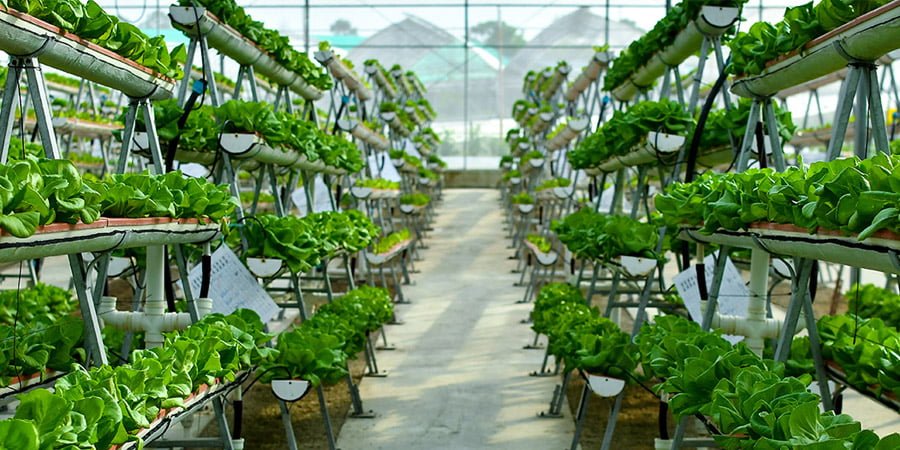What breakthrough technologies will be in the greatest demand among fruit and vegetable growers after Ukraine’s victory in the war with Russia? Andriy Yarmak, the economist at the Investment Centre of the Food and Agriculture Organization of the United Nations (FAO), spoke about this at the XVIII annual conference “Vegetables and Fruits of Ukraine-2022“.
 The conference was held by the APK-Inform: Vegetables and Fruits project on December 2, 2022, offline in Kyiv under the auspices of #FTradeClub and with the support of FAO, EBRD and EastFruit.
The conference was held by the APK-Inform: Vegetables and Fruits project on December 2, 2022, offline in Kyiv under the auspices of #FTradeClub and with the support of FAO, EBRD and EastFruit.
“Why does the fruit and vegetable sector need breakthrough technologies, i.e. those radically changing all approaches to production and logistics? The main reason is the too high risk level in the vegetable and fruit business. It repels serious investors and leads to huge negative consequences for the industry, such as high product losses at all stages of distribution, sharp price fluctuations, low business stability, negative impact on the environment, high production costs, high seasonality, limited consumer access to a wide range of products, and much more,” Andriy Yarmak says.
Further, he dwelled on the technologies for horticulture, which FAO and EBRD experts are studying and promoting now, and which partially help to solve the afore-mentioned problems.
The first of these technologies is vertical farming, where the level of all types of risks, including marketing, is reduced drastically. By the way, the first international online conference “Vertical Farms: Development Strategies, Business Models and Risks“, where you will learn more about the experience of different countries in the creation and development of vertical farms, will be held on December 14. Free registration for the conference is available at the link.
In addition, all other types of covered ground and partially covered ground, such as greenhouses, net houses, nets, anti-rain systems, etc. are also promising, as they help at least reduce the level of risks.
Drones, agricultural drones or “hortidrones”, as we call them at EastFruit, are a crucial and promising technology that can significantly reduce the risks and costs of growing, as well as increase yields and product quality, which positively affects both income and leads to a reduction in product losses. Moreover, the use of drones in orchards and vegetable plantations is helping to drastically reduce the use of plant protection products, thus reducing the negative impact on the environment and costs for farmers, and making production more sustainable.

Underground drip irrigation is a technology that, in addition to reducing the cost of such a scarce natural resource as fresh water, helps reduce the cost of plant protection products and fertilizers, and increase productivity and product quality. Therefore, the FAO expert also considers it promising, especially in combination with other breakthrough technologies.
Weather stations, sensors, and automation of all processes in the orchards and on farms is one of the most complex and multifaceted tasks that no one has yet been able to fully solve. However, there is huge progress here and this is one of the most important areas that will dramatically reduce almost all risks and remove the notorious “human factor”.
Robotization is an unavoidable future given the huge labor challenges and the highest demand for labor in horticulture. This is one of the most complex and science-intensive segments, but the progress is obvious here, and elements of robotization can even be seen in the countries of our region. However, the transition to robotization in Central Asia, where there is still an excess of labor and no shortage of people willing to work in the field or orchard, will not be too fast even when these technologies become more advanced.

Pooling systems in logistics – the FAO and EBRD project team singles out an important segment. This is a technology successfully used in the US and the EU, and, partially, in Ukraine. However, for maximum efficiency it is necessary that all producers of perishable products and trade representatives switch to reusable folding containers. Moreover, integrating this system into international trade will be a critical step to reduce logistics costs, dramatically reduce the use of unsustainable packaging for fruits and vegetables, losses and costs.
Renewable energy sources are used in horticulture, but their share is quite low. However, the combination of two businesses, fruit and vegetable and energy generating, is seen in the EU and the US more and more often. Particularly promising are the technologies for growing crops that require shading under solar panels. There are also good prospects for generating green energy for trading companies using large storage areas, but it is important to have a reasonable government policy, which does not necessarily include subsidizing such projects.
The use of the site materials is free if there is a direct and open for search engines hyperlink to a specific publication of the East-Fruit.com website.




